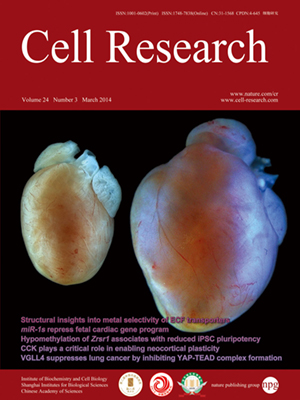
Volume 24, No 3, Mar 2014
ISSN: 1001-0602
EISSN: 1748-7838 2018
impact factor 17.848*
(Clarivate Analytics, 2019)
Volume 24 Issue 3, March 2014: 380-382 | Open Access
LETTERS TO THE EDITOR
Generation of transgenic golden Syrian hamsters
Mingming Gao1,*, Baoyu Zhang2,*, Jinjiao Liu1, Xin Guo1, Haibo Li1, Tao Wang1, Zifu Zhang3, Jiawei Liao1, Nathan Cong1, Yuhui Wang1, Liqing Yu4, Dong Zhao2 and George Liu1
1Institute of Cardiovascular Sciences and Key Laboratory of Molecular Cardiovascular Sciences, Ministry of Education, Peking University, Beijing 100191, China
2Department of Endocrinology, Lu He Teaching Hospital of the Capital Medical University, Beijing 101149, China
3Center for Molecular Biology Laboratory and Department of Animal Science, Xinyang College of Agriculture and Forestry, Xinyang Yangshan new district 24 new street, Xinyang, Henan 464000, China
4Department of Animal and Avian Sciences, University of Maryland, College Park, MD 20742, USA
Correspondence: George Liu, E-mail: georgeliu@bjmu.edu.cn;(zdoc66@126.com)
Golden Syrian hamsters are small rodents, but they display many features that resemble the physiology and metabolism of humans. Hamsters have been widely used in many research areas, including carcinogenesis1, reproduction2, virology3, diabetes4 and cardiovascular diseases5. With respect to lipid and glucose metabolism, hamsters, like humans, exhibit high levels of cholesteryl ester transport protein (CETP), intestinal-only ApoB editing, low levels of hepatic low-density lipoprotein (LDL) receptor activity6 and a high glycemic response to dietary fructose7, all of which are not observed in other rodents such as mice and rats. Consequently, hamsters, like humans, exhibit enhanced susceptibility to atherosclerosis (AS) and diabetes8, which led to the widespread use of hamsters in studies on AS and diabetes.
10.1038/cr.2014.2
FULL TEXT | PDF
Browse 2250


